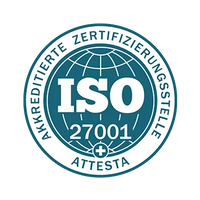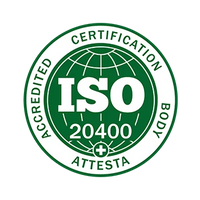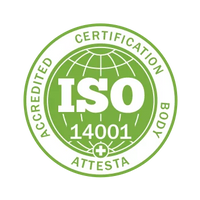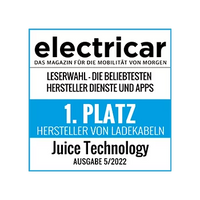
The Cycle of Electricity
Electricity flows in all directions, depending on where it is produced and where it is consumed. It is traded on a stock exchange in Europe - here too, the law of supply and demand applies, which determines the price.
How is it produced? How does it get to our homes? In what forms can it be stored and how can it best be reused? The following graphic is intended to answer these questions for you. Scroll down and you will find out what happens to the electricity and where.
production

Electricity can be produced in a variety of ways: in nuclear power plants, through solar, wind and water energy or in coal-fired power plants. In fact, nuclear power plants only account for around 26% of the entire electricity network - and that is twice the amount of nuclear power worldwide. A further 20% comes from solar, wind and water energy in Europe and more than 50% from fossil fuels, most of which comes from coal-fired power plants.

transport
From the source to the distributor
Once it's produced, it'll come to our house on its own. Almost.
After production, the electricity is first transmitted at a frequency of 50 Hz (alternating current) to extra-high voltage lines (up to 220 kV) for transport over longer distances. When it gets closer to its destination, it is transmitted to high voltage lines (110 kV), from where the first consumers receive the electricity. At this point, it is mainly companies that require large amounts of electricity, such as industrial consumers or railways.
In the next step, the electricity is transferred to medium-voltage lines with a voltage of 1-50kV. Only then is it fed into the city or local grid, where it still has a voltage of 400 or 230 volts. These are the low-voltage lines from which we also get our electricity.

The way to the house
The electricity does not yet come directly from the large circuit to our houses - first it runs through a distribution box before it is passed on to the individual electrical boxes in the houses. By the time it reaches the house, the electricity is three-phase - also known as three-phase current. Three-phase current is called three-phase current because there are three phases, i.e. three conductors, in these power lines. Each of these conductors has the same voltage, but the voltage curves and thus the maxima on each curve are shifted by a third of the sine phase. This is how the rotation occurs, which is why the current is also called three-phase current.


at home
electricity storage
It's an exciting time when it comes to storing electricity: the latest technologies are currently being tested, such as smart grids. The idea is to store electricity when usage is low and to be able to 'retrieve' it again when demand is higher.
But we can already store energy using batteries, as we all know. These batteries are simply charged and used as an energy source. Just like in an electric car.

distribution in the house
Unlike the distribution board outside the house, the electricity inside the house is only single-phase. It arrives at the electrical box from outside as three-phase and is then weakened, i.e. single-phase, and passed on to the sockets. The sockets in each house are designed so that each phase is equally loaded.

use
General information on electricity use
Electricity is used in many different ways: we need it every day, even just to blow-dry our hair, make coffee, etc. None of this would work without electricity. And soon even driving a car will be one of the things that we owe to electricity. But using electricity is not without its problems. It has an incredibly powerful energy that requires careful use. That is why there are now European standards that electrical devices must comply with in order to be considered 'safe'.

household appliances
Household appliances have a comparatively low power consumption. The power consumption of each individual appliance is indicated as the 'maximum power'. For example, if this is 1000W (=1kW) for a hairdryer, the appliance will use 1kW in one hour. The consumption is therefore 1 kWh (kilowatt hours). These appliances therefore do not need three-phase connections - sockets that only draw power in single phase are sufficient. Only one phase is passed on from the three-phase connection per household socket. However, to ensure that all three phases are equally loaded, the appliances must be divided equally between the phases. (see illustrations)


Plugs and sockets coming soon
In a normal Schuko socket and in the blue CEE socket there is always a phase and a neutral and a protective conductor - that is why these are also called "230V sockets". The blue CEE sockets are just another design of the Schuko sockets - solid and splash-proof. In the red CEE sockets there are three phases and a neutral and protective conductor - that is why they are called "400V sockets" or colloquially "three-phase sockets". The red CEE sockets come in 2 sizes - one is mechanically larger than the other - but this has nothing to do with current strengths!
Basically, any "400V socket" (CEE red) can be turned into a "230V socket" (Schuko or CEE blue). All you need is the right combination of "plug -> cable -> coupling". There is no electrical conversion or other magic involved - two phases are simply omitted.
ATTENTION: there is a special feature. The fuses that are always connected upstream serve to protect the cables and devices that follow from excessive currents. In the typical house distribution, a cable with a cross-section of 1.5mm² is used. These cables may only be loaded with a maximum of 16A, otherwise there is a risk of fire. A Schuko socket or a socket for CEE blue may also be loaded with 16A and is therefore fused with 16A. The smaller CEE red is fused with 3x16A. If I leave out two phases here and adapt them to a Schuko coupling or CEE blue, everything is fine, because one phase is properly fused with 16A!
The larger CEE red can be loaded with 3x32A and is also protected by three 32A fuses. If I now leave out two phases and adapt to Schuko, then the Schuko would be protected with 32A, which in turn is dangerous! Therefore, when adapting from the CEE 32 to other smaller sockets, there must always be additional 16A fuses in the adapter cable. This makes it clear that no conversion takes place anywhere and no great electronics are required - the current is the same everywhere! The adapter cables are always stupid and accordingly cheap to get. Sockets do not supply a specific current, but only the current that is "requested" by the connected device - up to a maximum of the level of the upstream fuses.

charging processes

Charging cars is different from using conventional electronic devices. Although charging from a household socket is also possible, it takes much longer. To charge a car efficiently, it is recommended to connect it to a three-phase socket. However, this three-phase connection is not the same as that described above. Here you do not need three-phase current unless you want to do pirouettes with the car. Although the structure is the same as with sockets with three-phase current, the current is not drawn as such, but from each phase via the neutral conductor - thus each phase supplies 230V. You can see the structure of this connection in the illustration.

charging the car
Mode 1

In principle, only electrical devices that do not require a control unit (see next sections) can be charged in Mode 1, but are connected directly to the socket without communication. These include electric bicycles or small electric racers such as the Renault Twizy - but certainly not full-blown electric cars.
Mode 2

Charging in Mode 2 means that the control unit for the charging process is mobile. If you charge with mobile chargers, such as the Juice Booster, this happens in Mode 2. Mobile chargers are needed to be able to charge independently anywhere. The control unit in question communicates with the car and automatically locks the connection to the car and power source so that the plug cannot be pulled out under full load.
Mode 3

Charging in Mode 3 is actually exactly the same as in Mode 2. The only difference is that the control unit is not mobile, but stationary and is permanently connected to the power grid by the electrician. This means that you only need the connection between the car and the control unit, which makes transporting the charging cable a little easier - unless it is permanently attached to the charging station.
Mode 4

Mode 4 stands for DC charging. Here, the current is converted from alternating current (AC) to direct current (DC) by a rectifier outside the vehicle (image: Juice Director). This is necessary because only direct current can be stored in the batteries. With the other charging modes, this conversion only takes place on board the car. Outside the car, however, larger, heavier and therefore more powerful rectifiers can be used, which can convert more kW at the same time. This speeds up the charging process compared to modes 1 to 3. However, DC chargers are currently far too expensive for use at home and are primarily suitable for vehicle fleets. Charging in mode 4 is only possible with a CHAdeMo or CCS plug or at a Tesla Supercharger. You can find more information on charging with DC in the next chapter.

When charging with AC (alternating current)
As described in the AC/DC chapter, electricity is available in the form of alternating current and direct current. Alternating current is easier to transport, whereas direct current is easier to store. The electricity is therefore fed to the car as alternating current, converted in the car and then stored as direct current in the battery. From the battery, it is converted back into alternating current and used for propulsion.

When charging with DC (direct current)
The step of converting AC to DC can also be brought forward so that the electricity that comes into the car is already direct current and can be stored directly. However, this requires a special device and a suitable plug. Because the rectifiers outside the car are usually larger and therefore more powerful than those built in, the charging time is shortened. We have described which plugs make this accelerated charging possible in the Plugs and Cables chapter.
While driving
Modern electric cars only use AC motors. The advantages over DC motors more than make up for the very small loss in conversion from the battery's DC current:
AC motors are significantly more efficient. They can seamlessly switch to dynamo power (recuperation) when coasting, thus recovering a lot of energy from deceleration.
The Tesla car brand is named as a tribute to the discoverer of alternating current, the Serbian Croat Nikola Tesla.

Battery or rechargeable battery?

The accumulator
The battery is what makes most electric vehicles move forward today. In everyday language, it is often simply called a "battery," but this is technically incorrect. Batteries are one-time energy storage devices and cannot be recharged. Since disposable batteries would be a real waste in electric cars, rechargeable batteries (accumulators - Latin accumulare "to accumulate") are used - as with cell phones and the like.
![]()
materials and recycling
Lithium-ion batteries are used in today's electric vehicles. As the name suggests, they consist of the raw material lithium, which is mainly found in regions such as Afghanistan, South America, China and Australia. (See map for details)
Around 100g of lithium is needed for a battery capacity of 1 kWh. This must have a purity of 99.95% to guarantee full performance. For a BMW i3 with a capacity of 22 kWh, this would be around 2.2 kg of the raw material, with a global stock base estimated at 13 million tonnes (total reserves are estimated at 29 million tonnes). The big advantage of lithium-ion batteries is recycling. 90% of the raw material from batteries and accumulators can be recycled - in contrast to raw materials such as crude oil or natural gas. It is not just the lithium that can be recycled by extraction - to make recycling easier, batteries that have reached the end of their service life and no longer deliver full capacity are reused as stationary energy storage devices.
FI protection

residual current device
Responsible charging box providers generally point out that residual current protection must be installed on site (i.e. in the home's electrical installation). For high voltage current (three-phase), it must be a type B residual current device, unless DC fault currents cannot be ruled out. This is the case if the battery in the car is not galvanically isolated (currently the case with the Renault Zoe). However, this is quite expensive and costs between around EUR 400 and 800 on the market. This means that additional residual current protection in a home or mobile charging box is not necessary. On closer inspection, it also seems logically much more sensible to protect the entire supply line if possible (i.e. from the house distributor) and not just the last few meters between the charging box and the car, especially since the splash-proof type 2 plug only carries power when it is plugged in correctly and cleanly.













